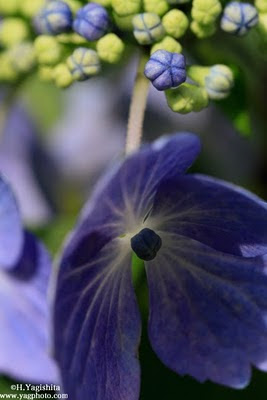そういえば紫陽花はシーボルトの自著の中でオタクサと呼んでいます。
このオタクサは、シーボルトの奥さんでありました
お滝さんからとったと言われています。何だか素敵な話です。
(I'm uploading 4 Ajisai(Hydrangea) photos for the last day of Ajisai-week on this blog.
I just remembered that in Seabolt's book hydrangea is called OTAKUSA.
This OTAKUSA came from his wife Otaki-san. Beautiful story isn't it?)
CANON EOS 5D MarkII, EF24-105mm F4L IS USM
(1/20s, F7.1, ISO200, 0EV)
CANON EOS 5D MarkII, EF24-105mm F4L IS USM
(1/125s, F7.1, ISO500, -0.3EV)
CANON EOS 5D MarkII, EF24-105mm F4L IS USM
(1/40s, F9, ISO400, -0.6EV)
CANON EOS 7D, EF100mm F2.8L MACRO IS USM
(1/125s, F6.3,ISO200, -0.6EV)
まだ紫陽花(オタクサ)はあちこちで咲いているようです。
是非足を運んでみてはいかがでしょうか。
(You can still see Ajisai(Otakusa) at many places.
It maybe good to see Ajisai when you take a walk.)







